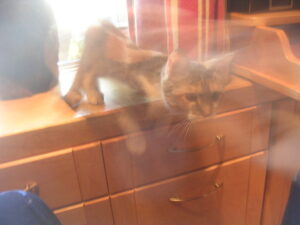
FUNNY HOW EARLY TRAINING / experience influences later ability and behavior. When I was a kid and a beginning photographer, I shot mostly black-and-white. 35mm throughout. I bought hundred-foot rolls of Kodak’s Tri-X Pan film and loaded my own cartridges. That would give me 33 3-foot rolls (about 38-40 exposures) Nearly a thousand images possible — admittedly not all good. Later on, when I was shooting for the Remembrancer at Walnut Hills, my film was doled out one roll at a time and processed by the yearbook’s pro — an adult named (IIRC) Pat. I’d hand the rolls off to Sarah Prince, the chief photog for the yearbook and the student newspaper. I got envelopes of negative strips back at the end of the year. I have a whole plastic shoebox full of negatives to be digitized from that experience. But I didn’t always have film in the camera. I used up my ration for the week for the Rem, or didn’t have the ten bucks or so the hundred-foot roll would cost me. But I never stopped framing shots and chasing the ones that got away.
The point is I was always shooting — whether I had film or not.
A few years back in a discussion with Toni, I asserted that one had to take 1,000 shots to get an image one might consider worthy. I didn’t have any backup for the opinion, and I accept that the ratio of shots to goals will vary from shooter-to-shooter. But I thought at the time and really have no reason to back down off it that it was a reasonable assertion.
This week, I decided that I wanted to discuss this notion and expand on the parameters of it. If I could. Clearly, it’s an observable fact that not all the shots one takes will be winners.

This shot of Karma — a long-gone cat from the Casa d’Alger clowder — was serendipitous. I was lining up a portrait shot when she jumped from the windowsill. I took the shot just as she leapt. As I was forming a thesis that she was — in my words — a busy kitty, always in motion and Up to Stuff. On seeing the shot, I fell in like with it, typing it and her as Heisenberg’s Cat. A takeoff on Shroedinger’s Cat, the thought experiment from quantum physics and conflating the Heisenberg Uncertainty Principle with it. The idea being you couldn’t tell both her precise location and the vector of her movement with any degree of precision, thus the blurred image and the Heisenberg thing.
Point being, luck has an influence on your output. Luck being present, how can you arrive at a precise ratio of shots to winners?
That’s about all I have on this topic. I will probably revisit the matter. Your thoughts are invited.